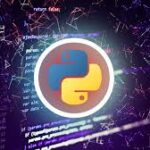“Protecting Your Organization from Email Threats”
Summary
The 300-720: Securing Email with Cisco Email Security course is designed to equip IT professionals with the skills necessary to protect email communications from cyber threats. In an era where email is a primary communication channel for businesses, safeguarding this medium is crucial. The course provides in-depth training on deploying, managing, and optimizing Cisco Email Security solutions, ensuring secure and reliable email exchanges.
Course Overview
The 300-720 exam, part of the Cisco Certified Specialist in Security Implementation certification, focuses on key areas of Cisco Email Security, including its architecture, configuration, and strategies for mitigating email-based risks. The course addresses essential aspects of email security such as spam, phishing, malware, data loss prevention (DLP), and regulatory compliance. Participants learn to implement robust email protection solutions that can handle complex security threats effectively.
Key Learning Objectives
- Understanding Cisco Email Security Architecture
Participants explore the components of Cisco Email Security, such as Cisco Secure Email, and how to deploy these solutions in both cloud and on-premises environments for optimal protection. - Implementing Email Security Policies
This module covers the configuration of email security policies to effectively filter incoming and outgoing email. Sender authentication protocols like SPF, DKIM, and DMARC are also discussed to enhance email security. - Threat Detection and Mitigation
The course addresses the identification and mitigation of threats such as spam, phishing, and malware. Techniques like sandboxing and reputation-based filtering are covered to help participants configure Cisco Email Security to block harmful emails. - Data Loss Prevention (DLP)
Participants learn DLP principles to protect sensitive information from being leaked. DLP policies are implemented to ensure compliance with regulatory requirements and prevent accidental data loss. - Email Encryption
Encryption protocols such as S/MIME and TLS are explored to safeguard sensitive data during email transmission. Configuring Cisco Email Security to use these protocols ensures secure communication. - Monitoring and Reporting
The course teaches participants how to monitor email traffic and security incidents using Cisco Email Security’s reporting tools. Participants will generate reports on email traffic, spam detection, and security events to assess the effectiveness of their email security measures. - Troubleshooting and Maintenance
Troubleshooting techniques for diagnosing and resolving common Cisco Email Security issues are provided. Best practices for maintaining the system’s performance are also discussed. - Best Practices for Email Security
Industry best practices for email security are highlighted, including user awareness training, incident response planning, and developing an organizational email security strategy aligned with business objectives and security policies.
Target Audience
This course is ideal for network security engineers, IT administrators, security analysts, compliance officers, and IT managers who are responsible for securing email communications within an organization. Prior knowledge of networking concepts (SMTP, POP3, IMAP) and basic security principles is recommended. Experience with Cisco technologies is beneficial but not required.
Course Format
The course is delivered through lectures, hands-on labs, and practical exercises, providing real-world scenarios where participants can apply their knowledge. The hands-on labs ensure participants gain practical experience in configuring and managing Cisco Email Security solutions.
Certification and Exam Information
Upon completing the course, participants are prepared to take the 300-720 exam, which is a necessary step for obtaining the Cisco Certified Specialist in Security Implementation certification. The exam consists of multiple-choice questions covering various aspects of email security.
Conclusion
The Securing Email with Cisco Email Security course offers IT professionals comprehensive training in safeguarding email communications. By mastering Cisco’s email security solutions, participants will be equipped to defend their organizations against emerging threats, protect sensitive data, and ensure compliance with industry regulations
Description
In an era where email remains a primary communication channel for businesses, safeguarding this medium from cyber threats is paramount. The 300-720: Securing Email with Cisco Email Security course equips IT professionals with the essential skills and knowledge to protect their organizations against email-based threats. This course focuses on the deployment, management, and optimization of Cisco Email Security solutions to ensure secure, reliable, and efficient email communication.
Key Learning Objectives
- Understanding Cisco Email Security Architecture:
- Explore the architecture and components of Cisco Email Security solutions, including Cisco Secure Email.
- Learn how to deploy these solutions in cloud and on-premises environments, ensuring robust email protection.
- Implementing Email Security Policies:
- Gain hands-on experience in configuring email security policies to filter incoming and outgoing email traffic effectively.
- Understand the role of sender authentication protocols such as SPF, DKIM, and DMARC in enhancing email security.
- Threat Detection and Mitigation:
- Identify various threats targeting email systems, including spam, phishing, and malware.
- Configure Cisco Email Security to detect and mitigate these threats using advanced protection techniques like sandboxing and reputation-based filtering.
- Data Loss Prevention (DLP):
- Learn the principles of data loss prevention and how to implement DLP policies to monitor and protect sensitive information.
- Ensure compliance with regulatory requirements through effective DLP strategies.
- Email Encryption:
- Explore the importance of email encryption for safeguarding sensitive information during transmission.
- Configure Cisco Email Security to utilize encryption protocols, such as S/MIME and TLS, to secure email communications.
- Monitoring and Reporting:
- Develop skills in monitoring email traffic and security incidents using Cisco Email Security’s reporting tools.
- Generate reports on email traffic, spam detection, and security incidents to assess the effectiveness of email security measures.
- Troubleshooting and Maintenance:
- Learn troubleshooting techniques specific to Cisco Email Security to diagnose and resolve common issues.
- Understand best practices for maintaining the health and performance of Cisco Email Security appliances.
- Best Practices for Email Security:
- Explore industry best practices for securing email communications, including user awareness training and incident response planning.
- Develop an organizational email security strategy that aligns with business objectives and security policies.
Target Audience
This course is suitable for a range of IT professionals, including:
- Network Security Engineers: Individuals responsible for implementing and managing email security solutions.
- IT Administrators: Administrators overseeing email systems who seek to enhance security measures.
- Security Analysts: Professionals focused on monitoring and responding to security incidents related to email communications.
- Compliance Officers: Individuals ensuring that organizational practices comply with data protection regulations.
- IT Managers and Professionals: Anyone looking to expand their understanding of email security solutions.
Prerequisites
To maximize the learning experience, it is recommended that participants have:
- Basic knowledge of networking concepts, including email protocols like SMTP, POP3, and IMAP.
- Familiarity with general security principles and practices.
- Experience with Cisco networking and security technologies is beneficial but not mandatory.
Course Format
The Securing Email with Cisco Email Security course is delivered through a combination of lectures, hands-on labs, and practical exercises. Participants will engage in real-world scenarios that reinforce learning and allow them to apply concepts in a controlled environment. The hands-on labs will provide practical experience in configuring and managing Cisco Email Security solutions, ensuring participants are well-prepared for the exam and real-world applications.
Certification and Exam Information
Upon successful completion of the course, participants will be prepared to take the 300-720 exam, which is a critical step toward earning the Cisco Certified Specialist in Security Implementation certification. The exam consists of multiple-choice questions that assess understanding of email security concepts and the ability to apply that knowledge in various scenarios.
Conclusion
The Securing Email with Cisco Email Security course provides a comprehensive opportunity for IT professionals to enhance their skills in protecting email communications. As email continues to be a primary vector for cyber threats, the demand for skilled professionals who can implement effective email security measures is increasingly critical.




![Certified Ethical Hacker (CEHv12) Practice Exams [2024 NEW]](https://couponcodenews.com/wp-content/uploads/2024/09/JJAAJAJAJ.jpeg)





